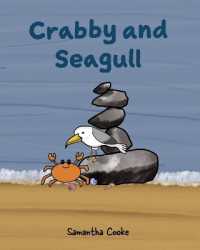Full Description
'The Ancient Device' is the story of four somehow familiar, rather dishevelled, sometimes sympathetic characters: Hare, Fox-Owl, Ribbonhead and King John.
We meet this dysfunctional and longing band of players on their journey to a site in the English landscape where they are to give a performance of sorts.
Yet exactly who they are, where they are and what they are up to, becomes increasingly uncertain as the book draws us into the mist, exploring and experimenting with notions of narrative and plot, psychology and self, performance and place...
Like the characters themselves, readers are unlikely to come out as they went in.
The Ancient Device is both a novel and an exploration of what the author calls the 'fiction of the self'. The title of the book refers to this fiction that we all necessarily inhabit, but also to performance as a kind of device (and, indeed, the book as a device too). At stake in this exploration is also the development of an idea of 'myth-work' and how narrative and the laying out of imaginary landscapes and figures can work as a form of repair.
Contents
Trusting the body, Notes on practice, Notes on reading, A conversation, I Disrupting the human, 1. Moving without the head on top, 2. Moving without standing upright, 3. Moving without the hands, 4. Moving from the pelvis, 5. Moving from the spine, 6. Moving the face, 7. Disrupting the human shape, 8. Questioning with the body, 9. Finding your edge, 10. Not slow or fast, in time, 12. Demystifying agency, II Being environment, 12. Landing, 13. Softening boundaries, 14. Moving in landscape, 15. Tuning to nature's rhythm, 16. Shapeshifting frames, 17. Un-shaping with environment, 18. Becoming less human, 19. Moving with human design, 20. Being with, 21. Embracing impermanence, A feral human, Acknowledgments, About the Author








